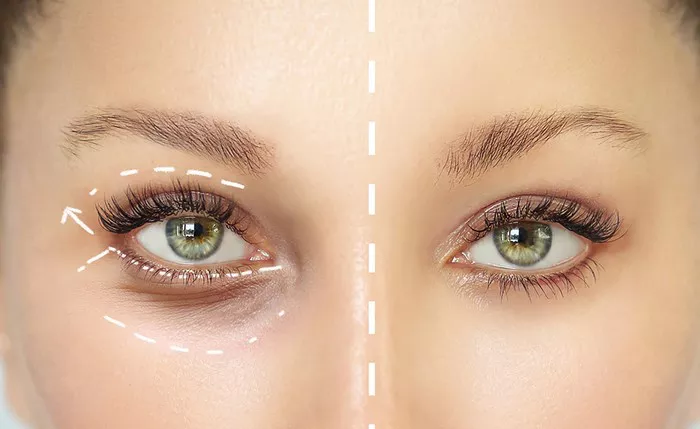Lower blepharoplasty, a popular cosmetic surgical procedure, aims to address various aesthetic and functional issues around the lower eyelids. As an effective solution for under-eye bags, dark circles, and puffiness, it has gained widespread recognition in the field of plastic surgery. This article explores the intricacies of lower blepharoplasty, its surgical techniques, and the potential for long-lasting results. By examining the permanence of lower blepharoplasty, we aim to provide a comprehensive understanding of its efficacy and the factors that influence long-term outcomes.
1. Introduction
Lower blepharoplasty, also known as lower eyelid surgery, is a surgical procedure designed to rejuvenate the appearance of the lower eyelids. By addressing concerns such as under-eye bags, wrinkles, and excess skin, it aims to create a more youthful and refreshed look. While the procedure has seen numerous advancements over the years, patients often wonder about the permanence of the results. This article delves into the various aspects of lower blepharoplasty to evaluate its long-term effectiveness.
2. Understanding Lower Blepharoplasty
Lower blepharoplasty can be performed using different techniques, including transcutaneous, transconjunctival, and laser-assisted approaches. During the procedure, excess skin, fat, and sometimes muscle are removed or repositioned to achieve the desired results. Transcutaneous blepharoplasty involves an incision made below the lash line, while transconjunctival blepharoplasty involves an incision inside the lower eyelid. Laser-assisted blepharoplasty utilizes laser technology for more precise tissue removal.
3. The Impact of Aging
One of the primary reasons individuals seek lower blepharoplasty is the aging process. As we age, the skin loses elasticity, and the fat pads beneath the eyes can protrude, leading to the formation of under-eye bags. While lower blepharoplasty can effectively address these concerns, the aging process continues, and other facial areas may undergo changes over time. As a result, patients should adopt a holistic approach to maintain the results achieved through lower blepharoplasty.
4. Permanence of Results
The permanence of lower blepharoplasty results is a common question among prospective patients. While the procedure can provide long-lasting outcomes, it does not halt the natural aging process. Factors such as genetics, lifestyle, and skincare habits can influence the longevity of the results. On average, patients can expect results to last for many years, and some may never require a revision procedure. However, periodic follow-ups with a qualified plastic surgeon are essential to monitor and maintain the results.
5. Surgical Techniques and Permanence
The choice of surgical technique can impact the permanence of lower blepharoplasty results. Transcutaneous blepharoplasty, with its external incision, can offer a more dramatic improvement and may be suitable for patients with significant skin laxity. However, the external incision may increase the risk of scarring and potentially affect the lower eyelid’s natural shape. On the other hand, transconjunctival blepharoplasty, with its internal incision, reduces scarring and minimizes the risk of ectropion but is more suitable for patients with minimal skin laxity and prominent under-eye fat pads.
6. Addressing Under-Eye Hollows
Lower blepharoplasty can improve the appearance of under-eye hollows caused by volume loss. However, in some cases, additional procedures may be required to achieve optimal results. Fat grafting or injectable fillers can be used in conjunction with lower blepharoplasty to add volume and restore a more youthful contour. These supplementary treatments can enhance the longevity of the results and provide a more comprehensive rejuvenation.
7. Potential Complications and Their Impact
Like any surgical procedure, lower blepharoplasty carries some risks. Complications such as bleeding, infection, scarring, and temporary vision changes are possible but relatively rare when performed by a skilled and experienced surgeon. Additionally, the risk of under-correction or over-correction exists, potentially affecting the overall outcome. Understanding potential complications and their management is crucial for both surgeons and patients.
8. Recovery and Aftercare
The recovery process plays a significant role in the permanence of lower blepharoplasty results. Patients must follow their surgeon’s post-operative instructions diligently. Avoiding strenuous activities, using prescribed eye drops, and protecting the eyes from sun exposure are vital during the healing phase. Adhering to proper aftercare practices can minimize complications and contribute to the long-term success of the procedure.
9. Patient Selection and Expectations
Successful outcomes of lower blepharoplasty depend on proper patient selection and setting realistic expectations. Candidates should be in good overall health and have specific concerns that can be addressed through the procedure. A comprehensive pre-operative consultation should involve a thorough discussion of the expected results, potential risks, and post-operative care to ensure patients are well-informed and have reasonable expectations.
10. Conclusion
Lower blepharoplasty offers a highly effective and long-lasting solution for under-eye concerns. By choosing the appropriate surgical technique, addressing specific patient needs, and understanding the impact of aging, patients can enjoy the benefits of this procedure for many years. While lower blepharoplasty does not halt the aging process, it can significantly enhance one’s appearance and boost self-confidence. To achieve the best results, individuals should seek consultation with a qualified and experienced plastic surgeon who can tailor the procedure to their unique needs and desired outcomes. With proper aftercare and regular follow-ups, lower blepharoplasty can be a permanent and precision-based solution for those seeking a refreshed and youthful look.

